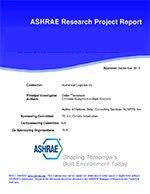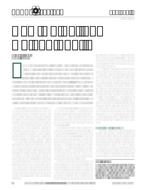Part 1 analysed the physical processes in encapsulated freezing and melting both at a micro level (within the capsule bed) and at a macro level (a portion of the store). A physical description of the processes was used to develop a computer model of the store. The store model was connected to other components in a modular simulation system, and it was shown that long-term simulation of an entire ice storage system can be completed within a reasonable period of time on a desktop computer. A dynamic model was shown to have several advantages over steady-state and quasi-steady-state modes for modelling both the variable capacity and rate of heat exchange in ice stores and the response of controls and chillers. Part 2, laboratory measurements of the rate of heat transfer of encapsulated ice, published previously, are further analysed and characterised such that they can be incorporated into the ice store model. The basic variation in heat transfer during phase change resulting from the increase or decrease in the thickness of ice in the capsule is represented by simple polynominal relationships. These relate the rate of heat transfer during freezing and melting to the ice fraction within the capsule. It is shown that by using these simple relationships and applying correction factors to allow for (a) the effects of supercooling, (b) the lack of internal convection during melting, (c) partial refreezing, and (d) variations in flow through the capsule bed that a dynamic model can realistically simulate a complex heat transfer situation on a personal computer.
KEYWORDS: calculating, measuring, heat flow, energy storage, ice storage, ice makers, ice, thickness, freezing, melting, supercooling, cyclic, refrigeration, computer programs, changing physical state, comparing.
Citation: Symposium, ASHRAE Trans. 1994, Vol.100, Part 1,
Product Details
- Published:
- 1994
- File Size:
- 1 file , 980 KB
- Product Code(s):
- D-17943


